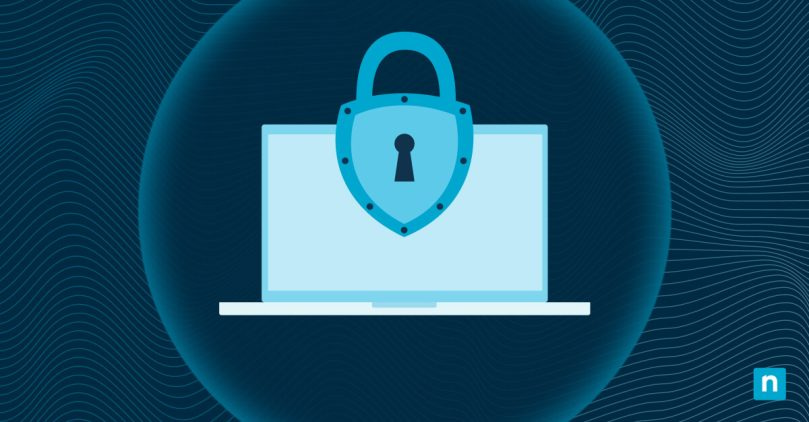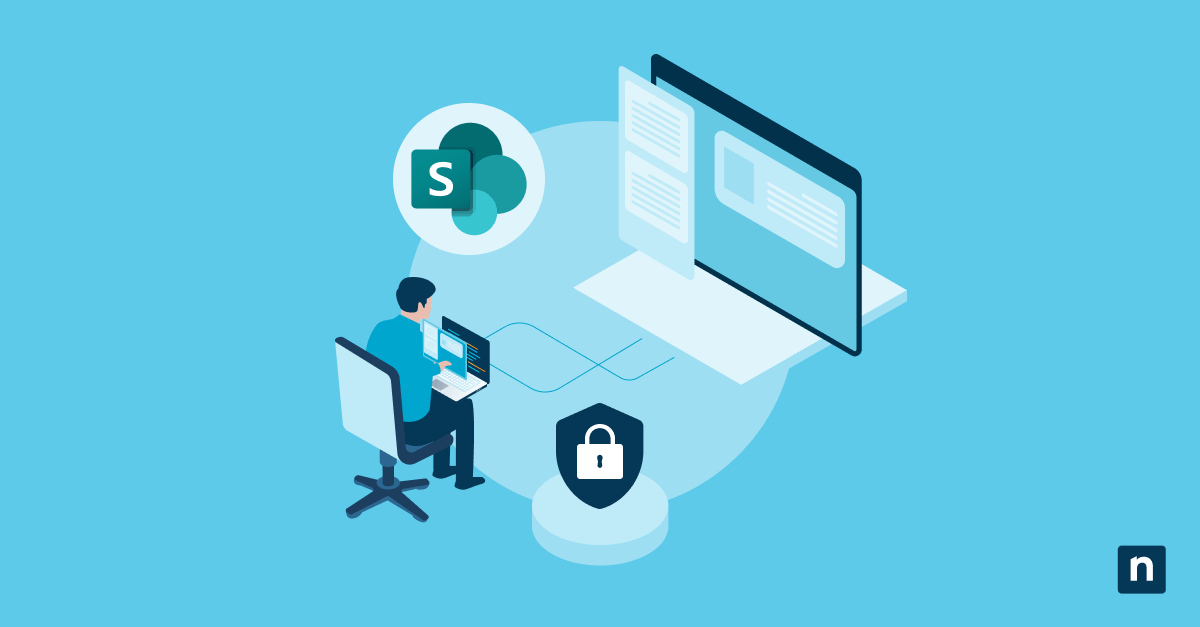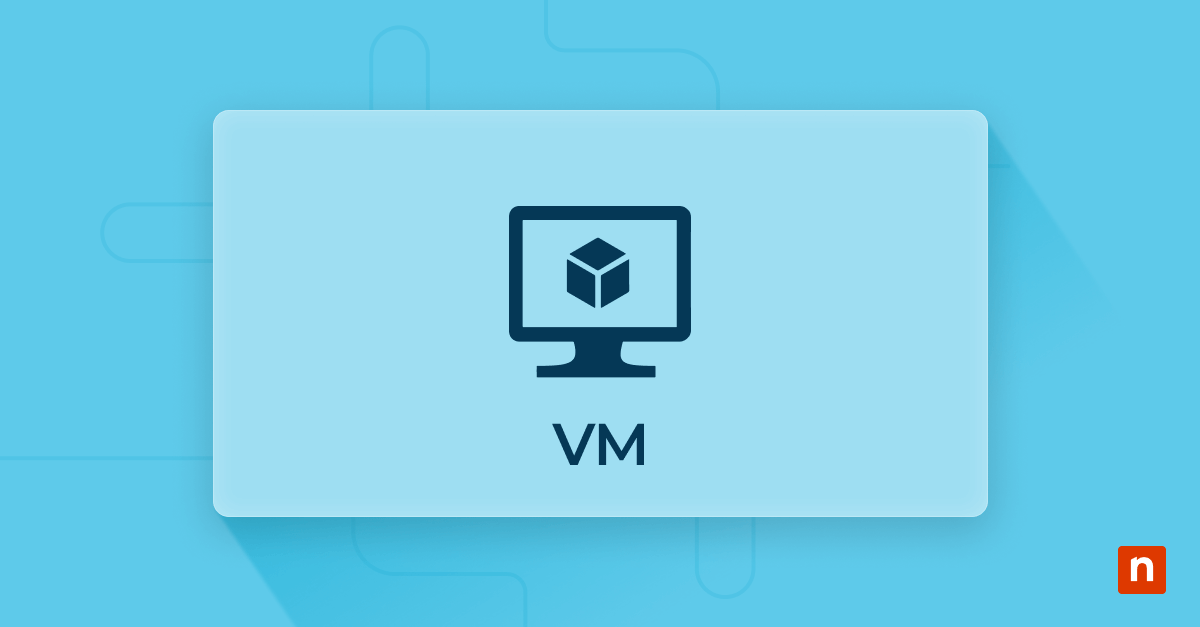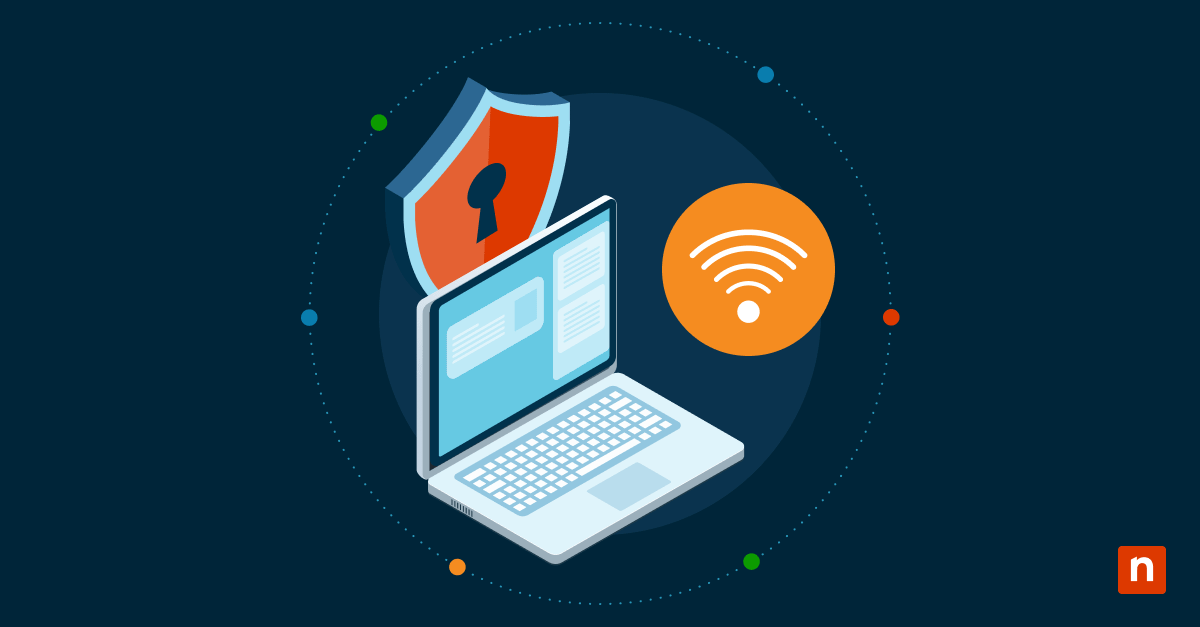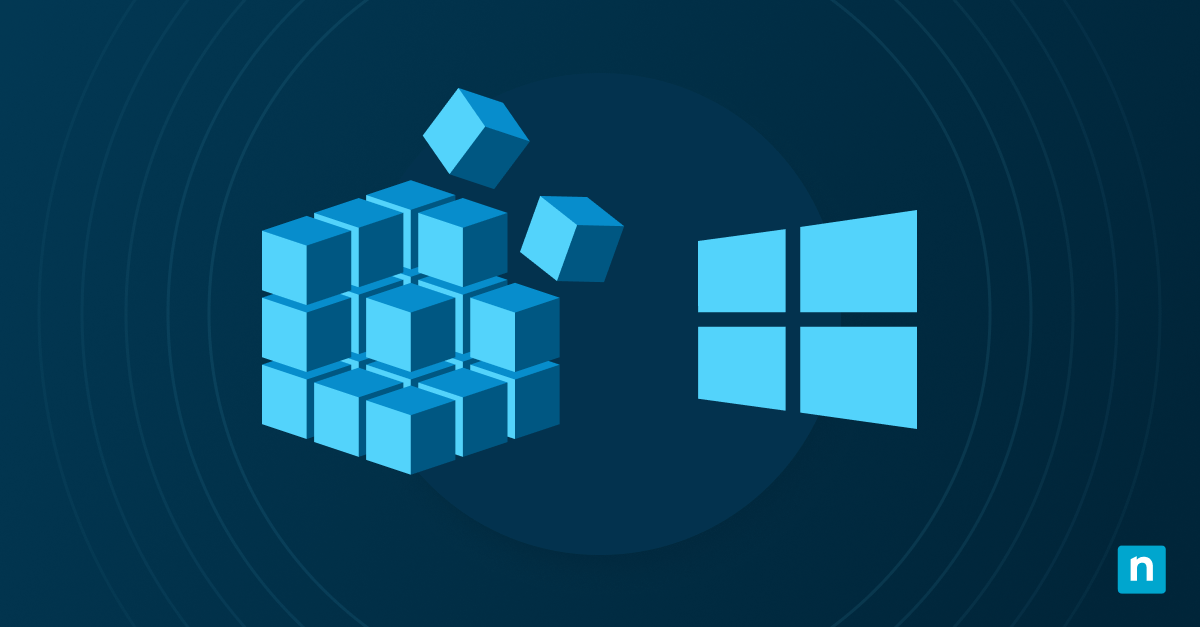Whether you’re an in-house IT professional or a managed service provider, ensuring the security and integrity of your networks is a crucial part of your bailiwick. In pursuit of greater security, Network Access Control (NAC) serves as a formidable guardian, ready to protect digital assets by regulating who gains entry to a network.
Understanding the fundamental concepts and best practices of NAC is essential for any organization that values data security and network integrity. This article delves deep into the world of secure Network Access Control, offering valuable insights into the core principles and practical implementation strategies that can help you fortify your network against unauthorized access and potential threats.
What this article will cover:
- What is Network Access Control (NAC)?
- What are the types of Network Access Control?
- Benefits of Network Access Control
- NAC use cases and applications
- Steps for implementing Network Access Control
What is Network Access Control (NAC)?
Network Access Control (NAC) is a network security solution and a set of policies and technologies designed to manage and control the access of devices, users, and applications to a network. NAC is a digital gatekeeper, ensuring the security, compliance, and integrity of a network by enforcing rules and policies that determine who or what can connect and interact with it.
What are the types of Network Access Control?
Network Access Control (NAC) comes in various forms, each tailored to specific organizational needs and security requirements. Here are some of the primary types of NAC:
Endpoint-based NAC
- Agent-Based NAC: This type of NAC requires the installation of software agents on endpoints (devices) to assess their security posture and control access through policy enforcement.
- Agentless NAC: Unlike agent-based NAC, agentless solutions do not require software installations on endpoint devices. Instead, they typically use techniques like Active Directory integration, SNMP (Simple Network Management Protocol), or DHCP (Dynamic Host Configuration Protocol) profiling to evaluate and control access.
Dissolvable NAC
Dissolvable NAC solutions provide temporary access control and security checks. When a device attempts to connect to the network, it is redirected to a web portal where it undergoes a health check and security sweep. Once it meets the specified criteria, it is granted access. This is often used for guest access or devices that do not require ongoing network access.
Cloud-based NAC
Cloud-based NAC solutions are hosted and managed in the cloud, which can simplify deployment and management. They provide flexibility for remote and distributed networks, allowing MSPs and enterprises to extend their NAC capabilities across multiple locations.
802.1X NAC
802.1X is a standard used for port-based network access control. It enforces authentication and authorization of devices and users before allowing them to access the network. It’s commonly used in wired and wireless enterprise environments.
Posture assessment NAC
Posture assessment NAC focuses on evaluating the health and security level of endpoints. It checks if devices meet security and compliance requirements before granting network access. This can include checking for updated antivirus software, operating system patches, and more.
Behavioral analysis NAC
Behavioral analysis NAC solutions are a form of real-time threat detection that monitors network traffic and device behavior. They identify anomalies and potential security threats based on deviations from normal network behavior. When suspicious activity is detected, the system can take automated actions.
Policy-based NAC
Policy-based NAC enforces network access control policies based on predefined rules. These policies can include who can access the network, what resources they can access, and under what conditions.
Guest access NAC
Guest access NAC solutions are designed to securely onboard and manage guest users or devices on the network. They typically provide limited access while ensuring that guests do not compromise network security.
IoT NAC
With the proliferation of Internet of Things (IoT) devices, specialized NAC security solutions are emerging to manage and secure these often less secure and diverse devices.
IT professionals will often use a combination of these NAC types based on their specific security needs, the complexity of their network environment, and the types of devices and users they need to manage. The goal is to balance security, user convenience, and operational efficiency while ensuring network access is well-regulated and protected.
Benefits of Network Access Control
Network Access Control (NAC) offers several significant benefits for organizations, including enhanced network visibility, improved threat detection and response capabilities, and increased compliance adherence. Here’s a closer look at each of these advantages:
Network visibility
- Real-time monitoring: Gain real-time visibility into all devices and users connected to the network. This visibility includes information about device types, operating systems, patch levels, and user identities.
- Inventory management: Maintain an accurate inventory of network devices, making tracking and managing assets easier.
- Location awareness: Identify where devices are connected within the network, aiding location-based access policies.
Threat detection and response
- Anomaly detection: Identify abnormal network behavior and alert administrators to potential security threats, such as unauthorized access or suspicious activity.
- Policy enforcement: Enforce security policies to ensure devices meet specific security standards before granting access. If a device is discovered to be non-compliant, it can be isolated or remediated.
- Automated responses: Trigger automated responses to security incidents, such as isolating a compromised device or quarantining it from the rest of the network to prevent further damage.
- Integration with security tools: Integrate with other security tools, such as intrusion detection systems and firewalls, to provide comprehensive layered security.
Compliance Adherence
- Regulatory compliance: Meet regulatory requirements, such as HIPAA, GDPR, or PCI DSS, by ensuring that only compliant devices and authorized users access sensitive data.
- Policy enforcement: Enforce custom security policies, ensuring access is granted only to those who meet specific security standards.
- Audit trails: Generate audit logs, which are valuable for compliance audits. These logs provide a record of who accessed the network and when.
Network segmentation
NAC allows organizations to implement network segmentation by creating different access policies for various user groups, departments, or device types. This reduces the attack surface and limits lateral movement for potential threats.
Guest access management
NAC simplifies the management of guest access, ensuring that guests are provided with limited, controlled access to the network while keeping them separate from sensitive resources.
Improved incident response
By providing real-time insights and automated threat response, NAC can significantly enhance an organization’s incident response capabilities, reducing the time it takes to detect and mitigate security incidents.
Enhanced user productivity
While ensuring security, NAC can also streamline the onboarding process for new devices and users, allowing them to quickly gain network access without compromising security.
NAC use cases and applications
Network Access Control (NAC) has a wide range of use cases and applications across various industries and organizations. Here are common use cases of NAC:
NAC helps manage and secure the influx of personal devices (such as smartphones, tablets, laptops) connecting to the corporate network, enforcing security policies and compliance checks.
IoT (Internet of Things) security
Network Access Control is crucial for managing and securing IoT devices, which are often vulnerable and require unique access control policies.
Guest network access
NAC tools enable organizations to provide controlled and secure guest access, typically with limited privileges, to ensure that guests do not compromise the network’s security.
Zero Trust security
NAC aligns with the principles of Zero Trust, where no one is trusted by default, and every device and user must authenticate and meet security requirements before accessing resources.
Wireless network security
NAC is used to secure wireless networks by verifying the identity of users and devices before allowing them to connect.
Steps for implementing Network Access Control
Implementing Network Access Control in a network environment involves careful planning and a deliberate approach. Here is a step-by-step guide on how to implement NAC, including the selection of suitable NAC solutions and integration with existing cybersecurity tools and systems:
-
Needs assessment and planning
As is typical, you’ll begin by thoroughly assessing your network’s needs and vulnerabilities. Identify the specific security and compliance requirements, the scale of your network, and the types of devices and users that need access control. This information will help you determine the goals and objectives of your NAC implementation.
-
Select the Best NAC Solution
Based on your assessment, choose a NAC cyber security solution that aligns with the network management needs identified during your evaluation. A simple NAC solution may suffice for smaller networks with less complexity, while larger and more complex networks may require enterprise-level NAC with scalability and advanced features.
-
Policy definition
Define access control policies that specify who can access the network, under what conditions, and with what level of access. These policies should consider user roles, device types, and security requirements.
-
Network segmentation
Implement network segmentation if needed. Create network segments or VLANs for different user groups or devices. Your NAC solution will enforce policies for each segment, reducing the attack surface and enhancing overall security.
-
Compliance checks
Configure compliance checks to ensure that devices meet specific security requirements, such as up-to-date antivirus software, operating system patches, and firewall configurations. NAC should be set to quarantine or remediate non-compliant devices.
-
Authentication and identity management
Implement robust user authentication methods, such as 802.1X, to verify user identities. Integration with identity management systems, such as Active Directory, can simplify user authentication and identity management.
-
Integration with existing cybersecurity tools
Ensure your chosen NAC solution seamlessly integrates with your existing cybersecurity tools and systems. Integration is essential for comprehensive security. For example, NAC should work in tandem with intrusion detection/prevention systems (IDS/IPS) and firewalls.
-
Deployment and testing
Deploy NAC gradually, starting with a small-scale pilot or a specific segment of your network. Test the NAC implementation thoroughly to identify any issues or misconfigurations. Adjust policies and settings as necessary.
-
User training and awareness
Educate end-users and IT staff about the changes brought by NAC. Make users aware of the new access control policies and the importance of compliance. Ensure IT personnel are prepared to manage and monitor the NAC system effectively.
-
Ongoing monitoring and maintenance
Implement continuous monitoring of the NAC system to ensure that it operates as intended. Use your RMM tool to cross-check NAC performance and use any available automations and integrations. Regularly update policies and compliance checks to adapt to evolving security threats and requirements.
-
Incident response procedures
Develop incident response procedures for NAC-related security incidents. Define how to handle non-compliant devices, security breaches, and potential threats detected by the NAC system.
By following these steps and taking a systematic approach to NAC implementation, organizations can strengthen network security, improve compliance, and gain better control over who and what accesses their network resources.
Maximize the power of NAC with NinjaOne
As seen throughout this article, NAC security solutions are invaluable when controlling access, enhancing visibility, and fortifying network security. What truly sets NAC apart is its proactive approach in securing network environments, identifying potential threats in real time, and automating responses to minimize risk. Considering the nature of the modern cyber threat landscape, the use of NAC is not merely an option but a fundamental cybersecurity strategy. Every IT pro should consider leveraging it to maintain the highest standards of security and compliance.
For IT professionals seeking an optimal security approach, combining NAC with NinjaOne’s network monitoring and management solution is a powerful duo. This integration creates a comprehensive cybersecurity solution that controls network access and ensures real-time visibility into network activities. With this robust team-up in place, IT professionals can proactively detect anomalies, respond swiftly to security incidents, and maintain a well-protected and efficiently managed network.
If you’re ready to try NinjaOne for yourself, schedule a demo or start your free 14-day trial and see why so many organizations and MSPs choose Ninja as their RMM partner!
Just looking for more hot tips and comprehensive guides? Check our blog often, and be sure to sign up for MSP Bento to have great info, interviews, and inspiration delivered directly to your inbox

